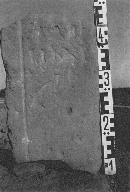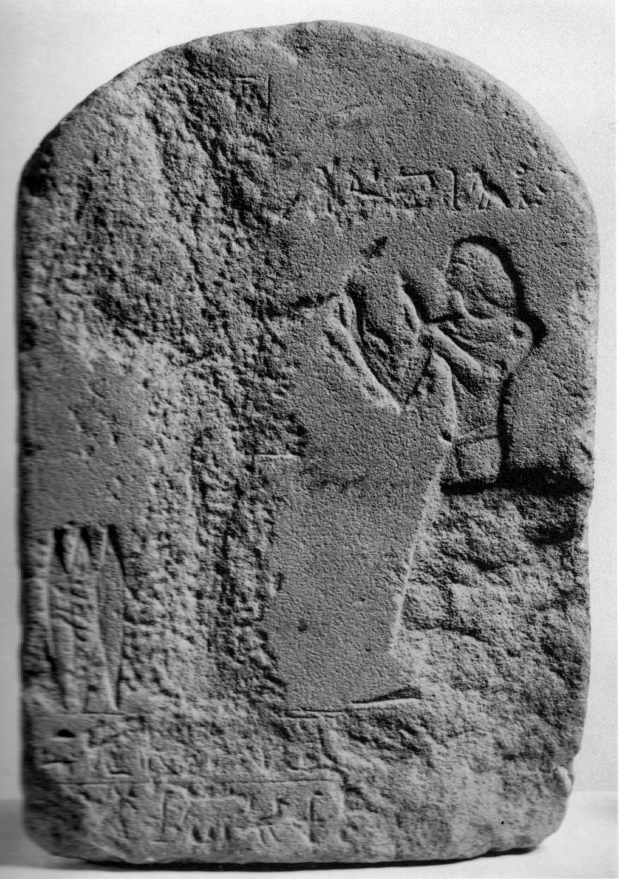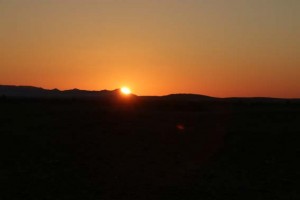Nehi, Viceroy of Kush under Thutmose III, is a well-known figure of the Egyptian administration in Dynasty 18 (see e.g. Leblanc 2009). He was responsible for building several temples in Lower and Upper Nubia, also the Amun temple at Sai, located just south of our excavation area SAV1 East.
My special interest for Nehi goes back to 1998 and my first participation in the joint German-Swiss mission at Elephantine. Like other officials of the Egyptian administration of Nubia, Nehi left several records and monuments in the area of the First Cataract: in particular stelae and rock inscriptions, records which I always thought have a peculiar “personal” touch – they invoke the illusion of getting close to those persons of the past, to some of their activities and thoughts, to almost grasp them as individuals.
It was one of the very joyful moments of my early career when a great topic as MA thesis was proposed to me in the dig house at Elephantine. And one of the stars of this thesis was no one else than Nehi!

Door jamb of Nehi from Elephantine (Budka 2001, pl. 3a)
As monument per se the unpublished object I had to deal with might not seem extremely interesting: it is a surface find from the kom of the ancient town of Elephantine, a sandstone block measuring 35 x 21 x 12 cm. It has a partly faded vertical column with hieroglyphs at its front side and can be identified as lower part of a left doorjamb (Budka 2001, 69; 107, cat. 1). Within the Egyptian settlement architecture made in mud bricks, architectural features like column bases and door elements were regularly executed in stone.
The text identifies the former owner of the building to which the jamb belonged: King’s son, overseer of the southern foreign lands, Nehi!
The importance of this small piece derives from its parallels – especially at Aniba and at Sai Island. Most probably these door frames belonged to administrative buildings and magazines attesting among others the adoration for king Thutmose III. Nehi as the highest official of the Nubian administration demonstrated his loyalty to the king, combining it with the worship of Egyptian gods.
At Elephantine, the stone block by Nehi may attest a temporary residence for the viceroy: the island was an important site to organize expeditions to the South and to count and distribute goods and more.
Further monuments by Nehi discovered at Elephantine are: a splendid sistrophorous statue JE 39749 (now kept at the Nubian Museum at Aswan) and a stela found close to the temple of Satet.

Stela of Nehi from Elephantine (Dreyer 1987, pl. 17c)
On this stela only the representation of Nehi adoring Amun-Ra-Kamutef has survived – the ithyphallic god was chiseled out during the Amarna age (Dreyer 1987, 113-14, pl. 17c).
What interests me most about Nehi and other officials of his time is to try to use all archaeological data available to reconstruct patterns of their past living conditions. The similarities in the architecture and stone monuments found at sites like Elephantine, Aniba and Sai Island are striking and this official line of record would propose few differences between these places. But does this picture change if we take un-inscribed records like ceramics, objects and other materials like animal bones and organic remains into consideration? A detailed assessment of the New Kingdom town of Sai and a close comparison with Elephantine might provide some answers – tracking Nehi by his inscribed monuments is one thing, trying to contextualize these records and establish aspects of their environment goes one step further. I am confident that our research within the framework of AcrossBorders will get us closer to understand the living conditions of viceroy Nehi and his contemporaries.
References
Budka 2001 = Julia Budka. Der König an der Haustür, Die Rolle des ägyptischen Herrschers an dekorierten Türgewänden von Beamten im Neuen Reich, Vienna 2001.
Dreyer 1987 = Günter Dreyer, X. Ausgewählte Kleinfunde, in Werner Kaiser et al., Stadt und Tempel von Elephantine, 13./14. Grabungsbericht, MDAIK 43, 1987, 107-114.
Leblanc 2009 = Christian Leblanc 2009. Nehy, prince et premiere rapporteur du roi, in I. Regen & F. Servajan (eds.), Verba manent, Recueil d’etudes dédiées à Dimitri Meeks par ses collègues et amis, Montpellier 2009, 241-251.








